Quantitative Study on MFL Signal of Pipeline Composite Defect Based on Improved Magnetic Charge Model
Abstract
:1. Introduction
2. Numerical Model of Composite Defect
2.1. Classic Model
2.2. Improved Model
2.2.1. Stress Operator
2.2.2. Application of Stress Operator
3. Analytical Calculation and Analysis
3.1. Influence of Defect Dimension on Signal
3.1.1. Depth Affects the Signal
3.1.2. Width Affects the Signal
3.2. Influence of Stress Density on Signal
4. Experiment
5. Project Verification
6. Conclusions
Author Contributions
Funding
Institutional Review Board Statement
Informed Consent Statement
Conflicts of Interest
References
- Shi, Y.; Zhang, C.; Li, R.; Cai, M.; Jia, G. Theory and Application of Magnetic Flux Leakage Pipeline Detection. Sensors 2015, 15, 31036–31055. [Google Scholar] [CrossRef]
- Yang, L.J.; Guo, T.Z.; Gao, S.X.; Liu, B. Feature analysis on magnetic flux leakage detection signal for special parts of oil and gas pipeline. J. Shenyang Univ. Technol. 2017, 39, 43–47. [Google Scholar]
- Kim, Y.Y.; Kwon, Y.E. Review of magnetostrictive patch transducers and applications in ultrasonic nondestructive testing of waveguides. Ultrasonics 2015, 62, 3–19. [Google Scholar] [CrossRef] [Green Version]
- Wang, Z.D.; Gu, Y.; Wang, Y.S. A review of three magnetic NDT technologies. J. Magn. Magn. Mater. 2012, 324, 382–388. [Google Scholar] [CrossRef]
- Katragadda, G.; Si, J.T.; Lord, W.; Sun, Y.S.; Udpa, S.; Udpa, L. A comparative study of 3D and axisymmetric magnetizer assemblies used in magnetic flux leakage inspection of pipelines. IEEE Trans. Magn. 1996, 32, 1573–1576. [Google Scholar] [CrossRef]
- Wang, G.-T.; Guo, T.-H. Recognition method of magnetic flux leakage signal for special defect of oil and gas pipeline. J. Shenyang Univ. Technol. 2019, 41, 401–405. [Google Scholar]
- Jafarzadeh, S.; Chen, Z.; Li, S.; Bobaru, F. A peridynamic mechano-chemical damage model for stress-assisted corrosion. Electrochim. Acta 2019, 323, 134795. [Google Scholar] [CrossRef]
- Xu, L.Y.; Cheng, Y.F. An experimental investigation of corrosion of X100 pipeline steel under uniaxial elastic stress in a near-neutral pH solution. Corros. Sci. 2012, 59, 103–109. [Google Scholar] [CrossRef]
- Katoh, M.; Nishio, K.; Yamaguchi, T. The influence of modeled B–H curve on the density of the magnetic leakage flux due to a flaw using yoke-magnetization. NdtE Int. 2004, 37, 603–609. [Google Scholar] [CrossRef]
- Clapham, L.; Babbar, V.; Byrne, J. Detection of mechanical damage using the magnetic flux leakage technique. Am. Soc. Mech. Eng. 2004, 41766, 983–990. [Google Scholar]
- Zhao, B.; Yao, K.; Wu, L. Application of Metal Magnetic Memory Testing Technology to the Detection of Stress Corrosion Defect. Appl. Sci. 2020, 10, 7083. [Google Scholar] [CrossRef]
- Wu, L.; Yao, K.; Shi, P.; Zhao, B.; Wang, Y. Influence of Inhomogeneous Stress on Biaxial 3D Magnetic Flux Leakage Signals. NDT E Int 2020, 109, 102178. [Google Scholar] [CrossRef]
- Shi1, P.; Su, S.; Chen, Z. Overview of Researches on the Nondestructive Testing Method of Metal Magnetic Memory: Status and Challenges. J. Nondestruct. Eval. 2020, 39, 43. [Google Scholar] [CrossRef]
- van der Horst, M.P.; van Kreveld, S.L.; Kaminski, M.L. Effffect of stress-induced magnetization on crack monitoring by self magnetic flux leakage method. Int. J. Appl. Electromagn. Mech. 2018, 1, 1–18. [Google Scholar] [CrossRef] [Green Version]
- Shi, P.; Baib, P.; Chenb, H. The magneto-elastoplastic coupling effffect on the magnetic flux leakage signal. J. Magn. Magn. Mater. 2020, 504, 166669. [Google Scholar] [CrossRef]
- Wang, Y.; Melikhov, Y. Turgut Meydan1. Stress-Dependent Magnetic Flux Leakage: Finite Element Modelling Simulations Versus Experiments. J. Nondestruct. Eval. 2020, 39, 1. [Google Scholar] [CrossRef]
- Liu, B.; Ma, Z.Y.; Liu, Z.Q.; Luo, N.; Xu, X. Research on internal detection technology for axial crack of longdistance oil and gas pipeline based on micromagnetic method. Struct. Health Monit. 2020, 19, 1123–1136. [Google Scholar] [CrossRef]
- Liu, B.; Liu, Z.; Luo, N. Research on Features of Pipeline Crack Signal Based on Weak Magnetic Method. Sensors 2020, 20, 810. [Google Scholar] [CrossRef] [PubMed] [Green Version]
- Luo, X.; Zhu, H.Y.; Ding, Y.P. Modified magnetization model of ferromagnetic materials based on mechano-magnetic coupling effect. Acta Phys Sin. 2019, 68, 187501. [Google Scholar]
- Moonesan, M.; Kashefi, M. Effect of sample initial magnetic field on the metal magnetic memory NDT result. J. Magn. Magn. Mater. 2018, 460, 285–291. [Google Scholar] [CrossRef]
- Bratov, V.; Borodin, E.N. Comparison of dislocation density based approaches for prediction of defect structure evolution in aluminium and copper processed by ECAP. Mater. Sci. Eng. A 2015, 631, 10–17. [Google Scholar] [CrossRef]
- Pengpeng, S.; Xiaojing, Z. Magnetic charge model for 3D MMM signals. Nondestruct. Test. Eval. 2016, 31, 45–60. [Google Scholar] [CrossRef]
- Qing-You, L.; Xu, L.; Hai-Yan, Z.; Yi-Wei, H.; Jian-Xun, L. Modeling plastic deformation effect on the hysteresis loops of ferromagnetic materials based on modified Jiles-Atherton model. Acta Phys. Sin. 2017, 66, 107501. [Google Scholar]
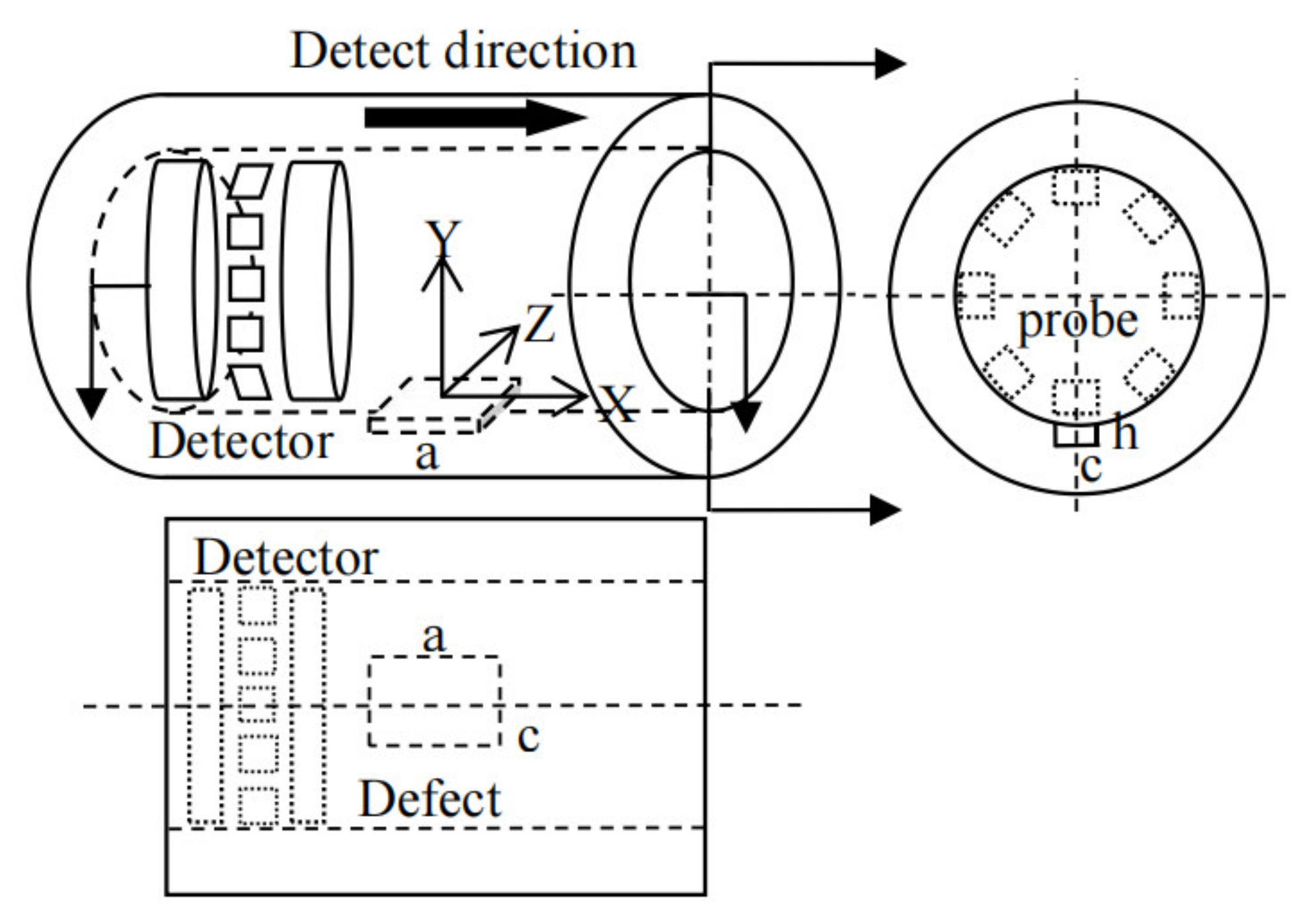
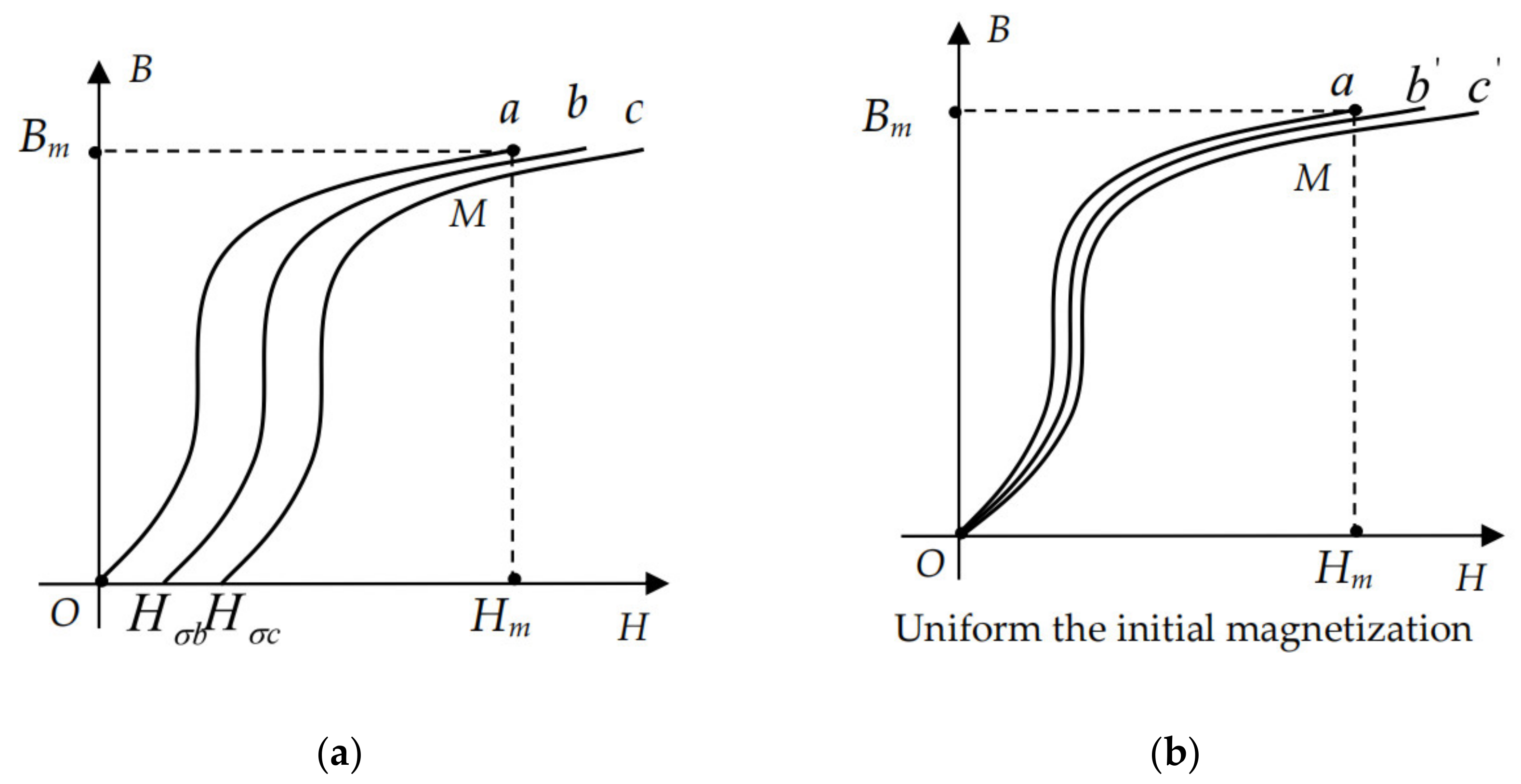
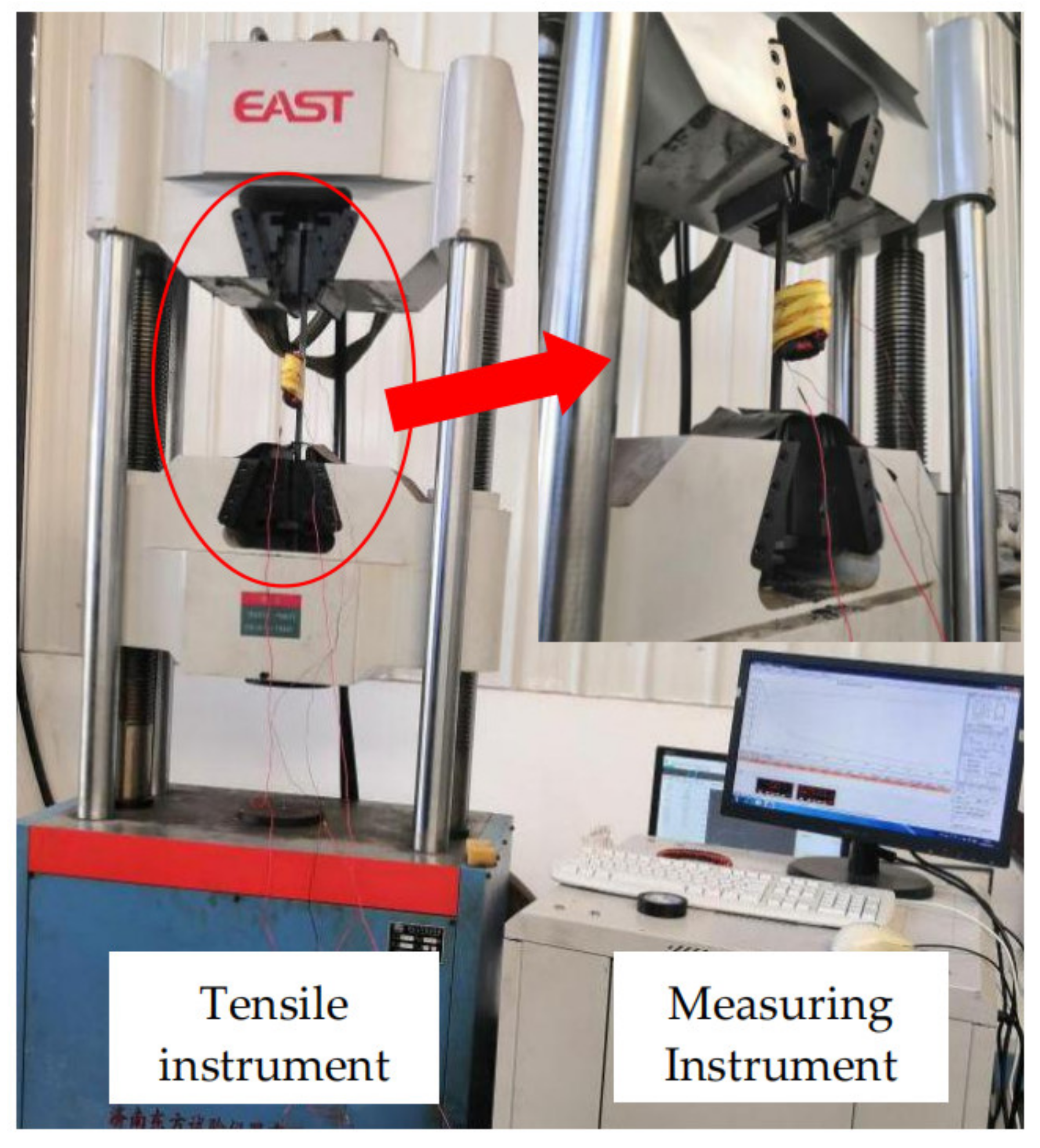





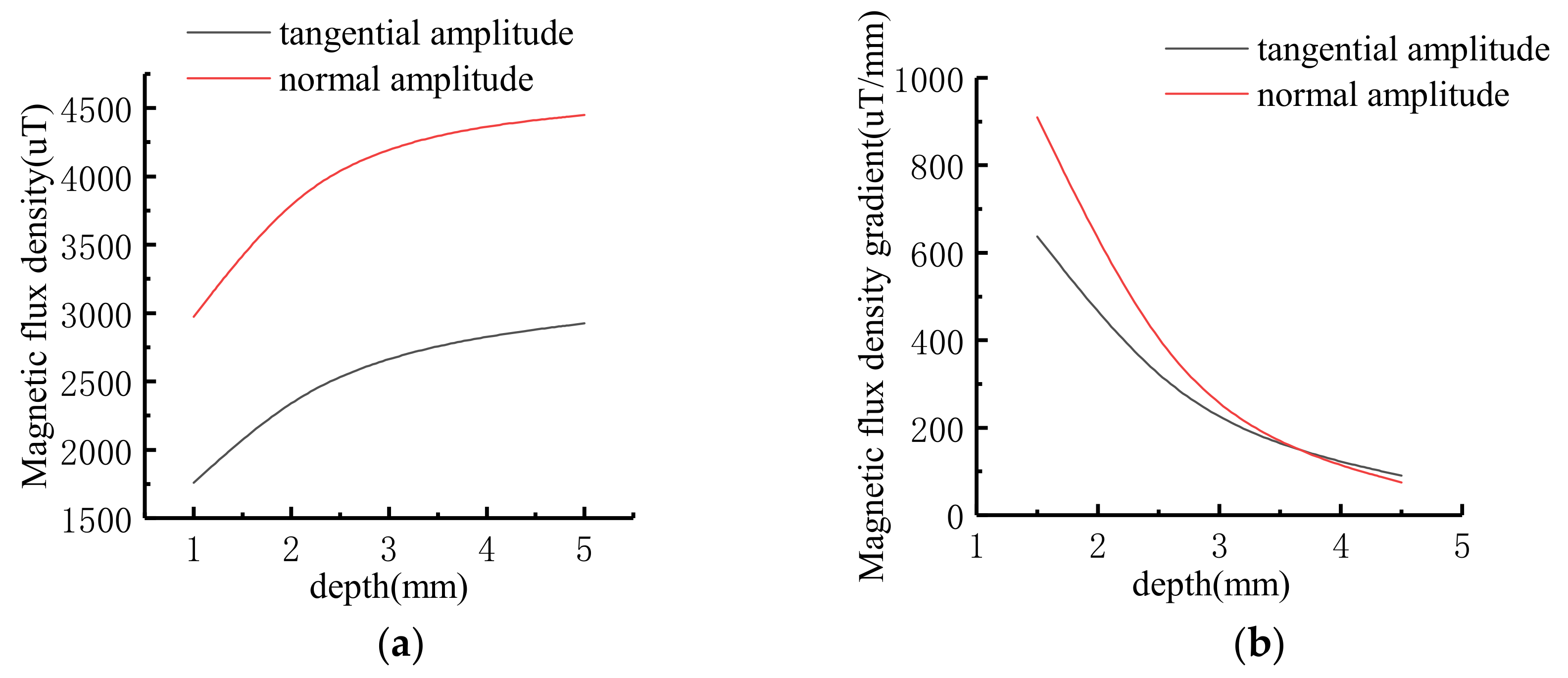
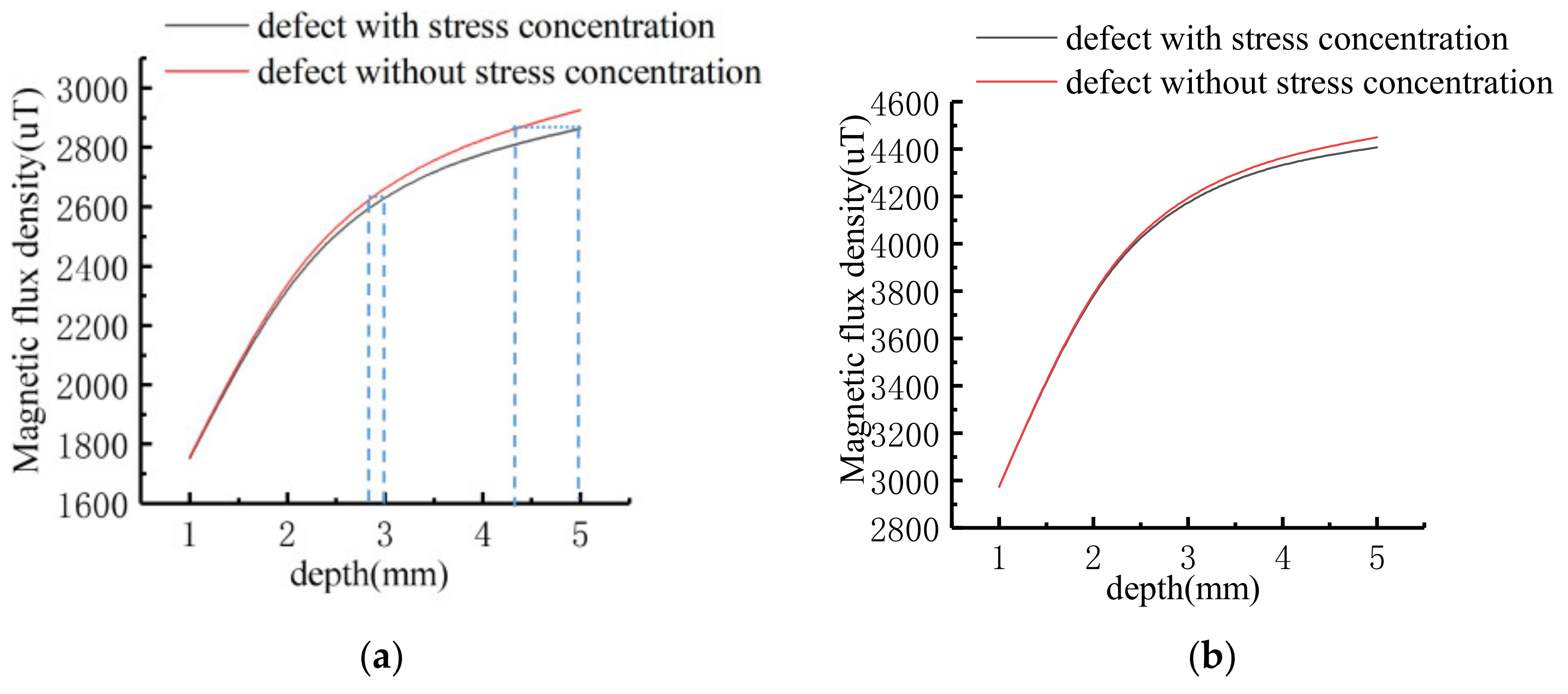
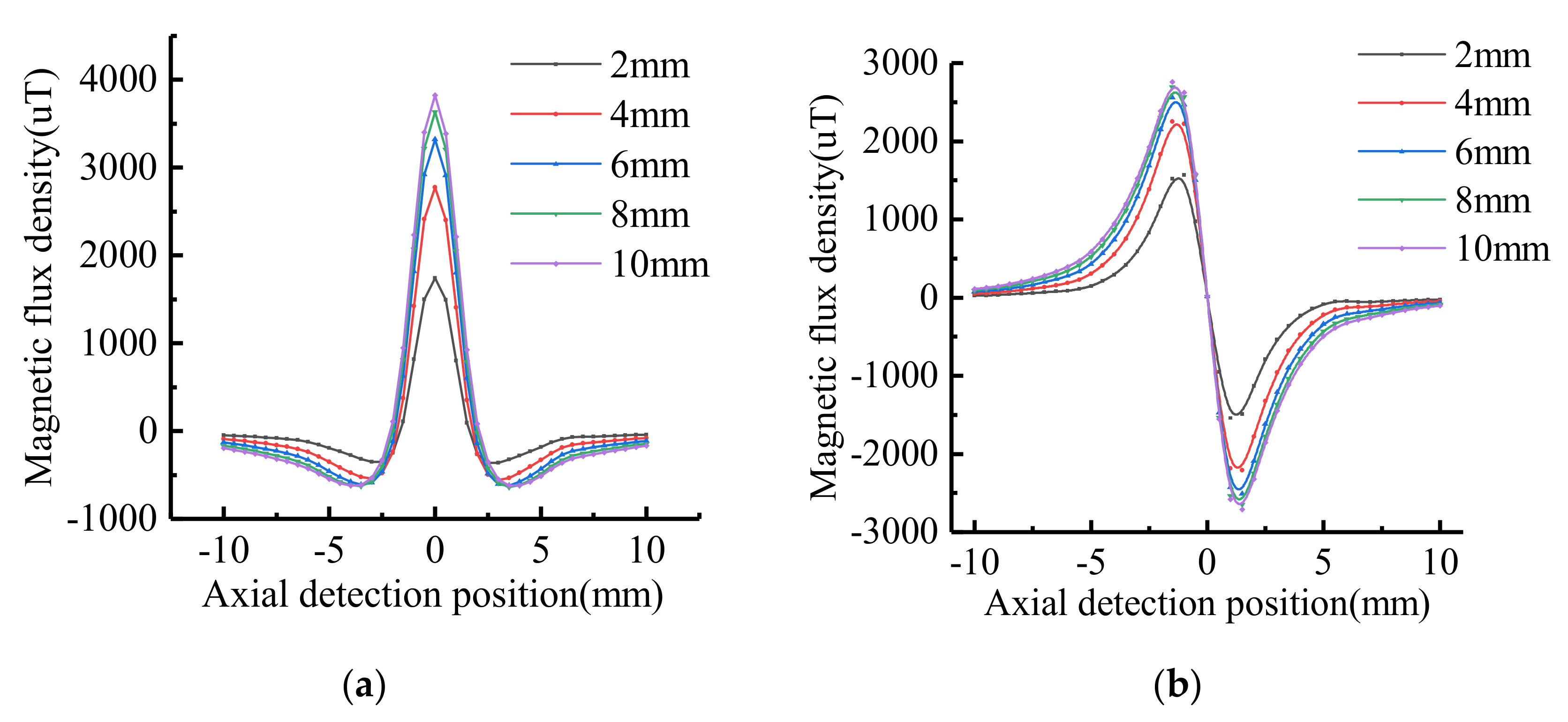

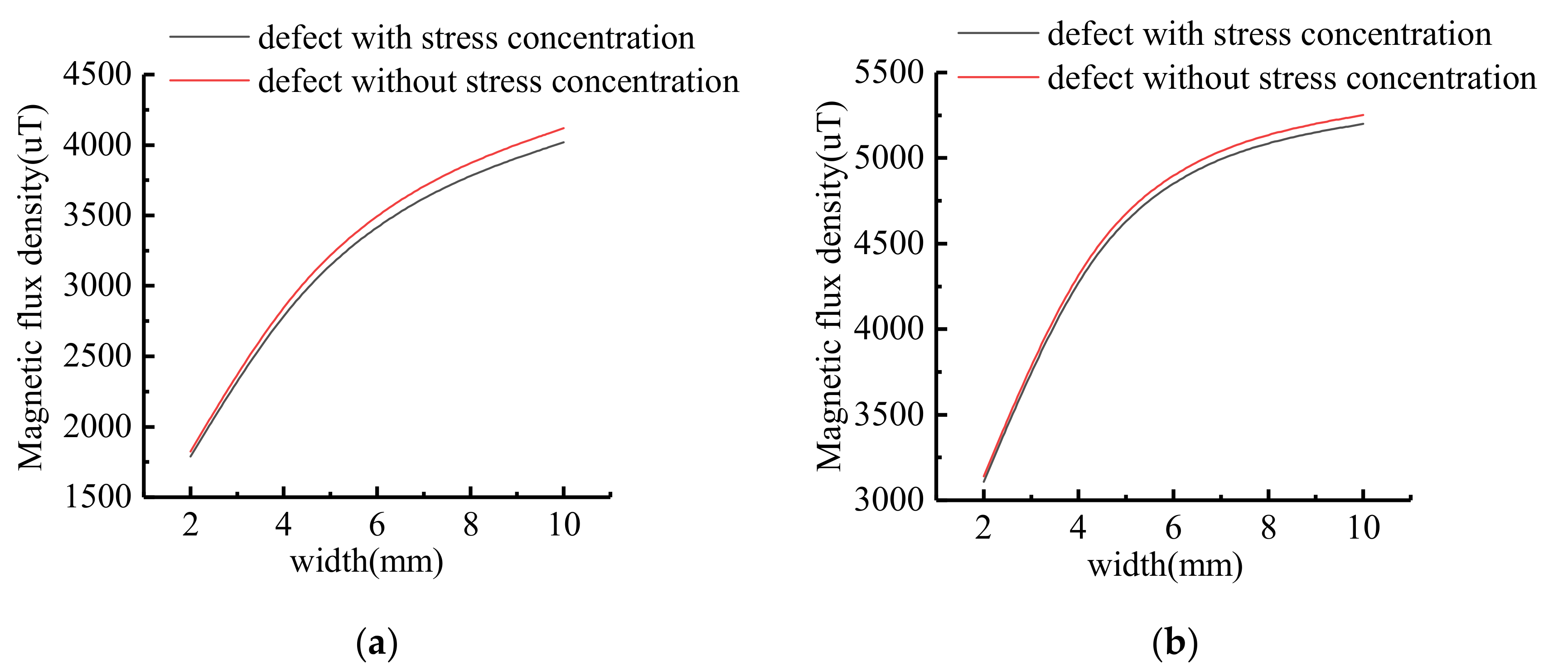


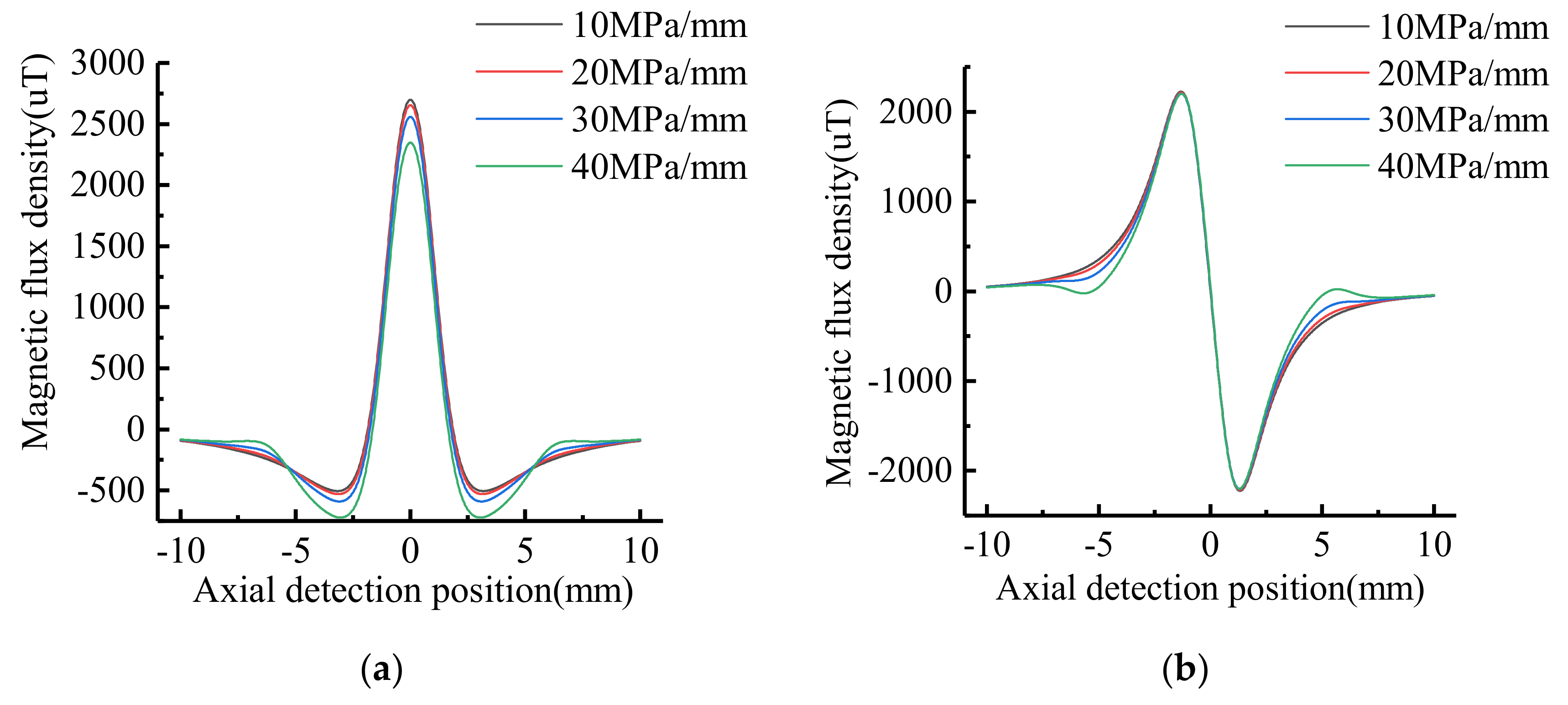
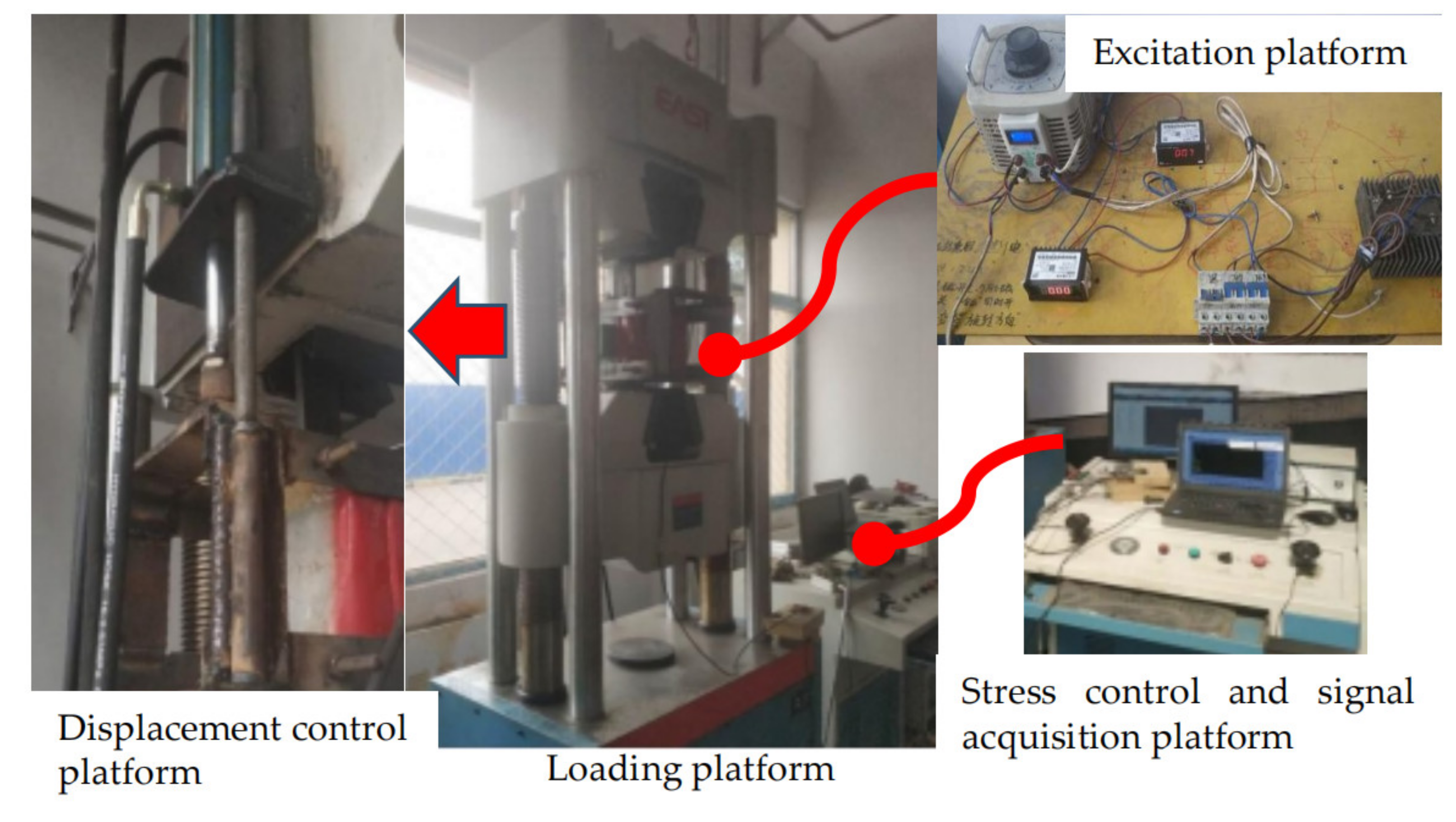
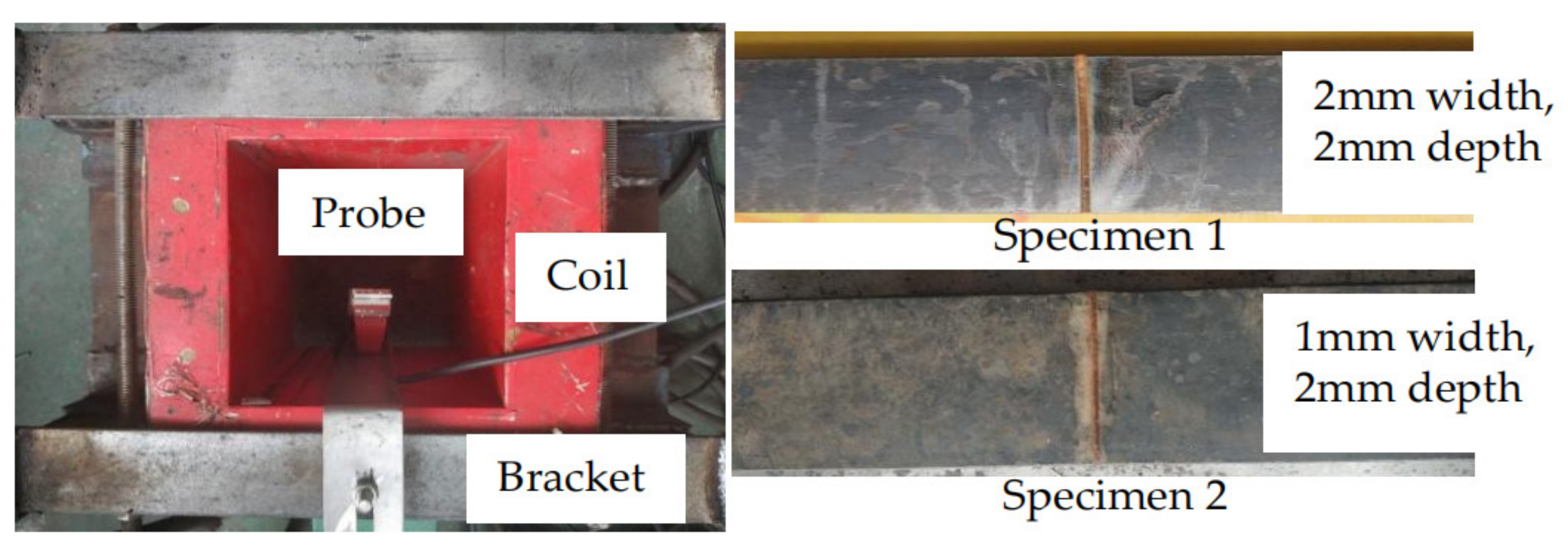


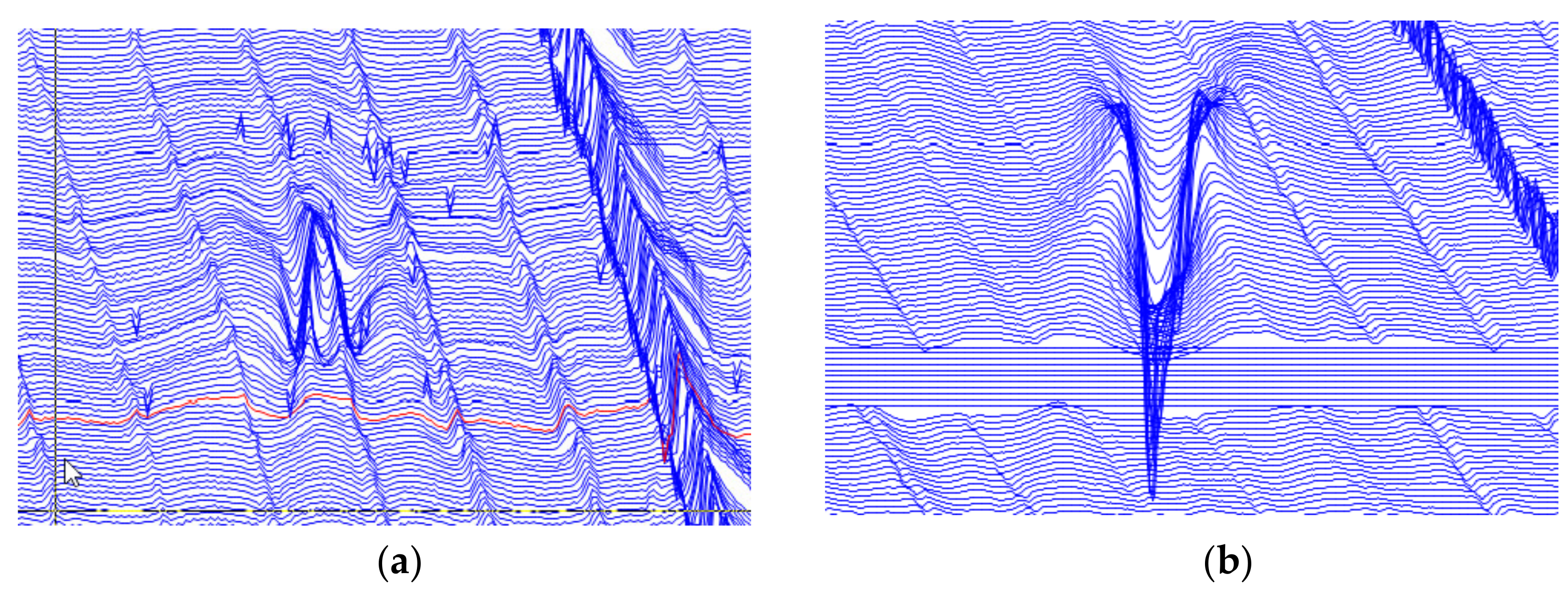


| Defect Types | Tangential Signal(μT) | ||||
|---|---|---|---|---|---|
| Max | Min | Base | Amplitude | Vpp | |
| With no stress | 2348 | −520 | −47 | 2397 | 2868 |
| With stress | 2330 | −539 | −49 | 2377 | 2869 |
| Defect Types | Normal Signal(μt) | |||
|---|---|---|---|---|
| 5 mm Away from the Center | Absolute Value of Base | Absolute Value of Extremum | Amplitude | |
| With no stress | 173 | 15 | 1941 | 1926 |
| With stress | 112 | 14 | 1931 | 1917 |
Publisher’s Note: MDPI stays neutral with regard to jurisdictional claims in published maps and institutional affiliations. |
© 2021 by the authors. Licensee MDPI, Basel, Switzerland. This article is an open access article distributed under the terms and conditions of the Creative Commons Attribution (CC BY) license (https://creativecommons.org/licenses/by/4.0/).
Share and Cite
Liu, B.; Luo, N.; Feng, G. Quantitative Study on MFL Signal of Pipeline Composite Defect Based on Improved Magnetic Charge Model. Sensors 2021, 21, 3412. https://doi.org/10.3390/s21103412
Liu B, Luo N, Feng G. Quantitative Study on MFL Signal of Pipeline Composite Defect Based on Improved Magnetic Charge Model. Sensors. 2021; 21(10):3412. https://doi.org/10.3390/s21103412
Chicago/Turabian StyleLiu, Bin, Ning Luo, and Gang Feng. 2021. "Quantitative Study on MFL Signal of Pipeline Composite Defect Based on Improved Magnetic Charge Model" Sensors 21, no. 10: 3412. https://doi.org/10.3390/s21103412






